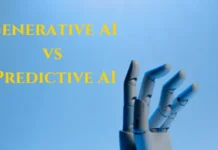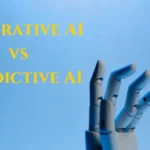Nowadays, the term artificial intelligence is very well known and sound, but what types exist around us?
There are four types of artificial intelligence types, classified according to a generalized vision of the advances in Artificial Intelligence (AI) research. It is a kind of consensus that concludes that intelligent and sensitive machines are getting closer.
In addition, we can find more and more fields of application of artificial intelligence, which significantly impacts companies.
We all envision a time when AI is pretty much personified. We envision a future in which robots will be humanoids who can learn, perceive, and act like a person.
It is true that machines already understand verbal commands, distinguish images, drive autonomous cars, and beat us when we play against them. How long can it be before they walk among us?
A White House report on artificial intelligence takes a somewhat skeptical view of that dream. He says that within the next 20 years, machines will likely “exhibit broadly-applicable intelligence comparable to or superior to that of humans.” The report says that “machines will meet and exceed human performance in more and more tasks.”
However, the document rules out that during those two decades, we could live with computational models as complex as humans.
The US government report focuses on what we might call general intelligence tools: machine learning and deep learning. This is the technology that has managed to play ‘Jeopardy’ well or beat the human masters of ‘Go,’ the most complicated game ever invented.
These current artificial intelligence systems are capable of handling large amounts of data. They perform complex calculations very quickly, but they lack an element that will be key to building the intelligent machines we envision in the future.
We must overcome the boundaries that define the four different types of artificial intelligence, the barriers that separate machines from us.
Look for the formula to design a robot capable of learning by itself. To do this, he says that the AI must follow the same learning process as a person. Arend Hintze has established a classification with four types of artificial intelligence.
1. Reactive machines
The most basic types of AI systems are purely reactive. They cannot form memories. They also cannot use past experiences on which to base current decision-making.
Deep Blue was a supercomputer created by IBM. He was able to beat international grandmaster Garry Kasparov at chess. It happened in the late 1990s and is the perfect example of this type of machine.
You can identify the pieces on a chessboard and know how each moves. You can predict the best moves and choose the best of all possibilities.
But he has no concept of the past. She also has no recollection of what has happened before. Aside from a chess rule, Deep Blue ignores everything before the present moment. He only focuses on the pieces on the board in real-time and chooses between the next possible moves.
It is essential for the user to know that they are dealing with a machine in a text or voice conversation and to avoid creating false expectations about what to expect from that conversation.
2. Limited memory
Type II drives machines that can look into the past. Autonomous vehicles already do something similar. For example, they observe the speed and direction of other cars. For them to work like this, specific objects must be identified and monitored over time.
Let’s say these observations are added to the pre-programmed memory representations of these cars. Lane markings, traffic lights, and other essential elements, such as curves in the road are included.
Experiences such as when the car decides when to change lanes to avoid interrupting another driver or being hit by a nearby car are also added.
But these simple pieces of information about the past are only transitory. They are not saved as part of the car experience library. In these types of artificial intelligence, the machine cannot compile experience for years as a human can.
So how can we build AI systems that build complete representations, remember their experiences, and learn how to handle new situations?
3. Theory of mind
We’ve reached a point where we’re getting closer to the kinds of artificial intelligence that we want in the future. Machines in the next class are more advanced. They not only form representations about the world but also about other agents or entities.
In psychology, this is called the ‘theory of mind’. It involves understanding that people, creatures, and objects can have thoughts and emotions that affect their behavior. This is crucial to the way humans form societies because it allows us social interaction.
If machines are to walk among us, they must have an understanding of how we think and how we feel. They should also learn what we expect and how we want to be treated. They will have to adjust their behavior accordingly.
4. Self-awareness
The final step in AI development is to build systems that can form representations of themselves. Ultimately, AI researchers will have to understand consciousness and build machines that have it.
Sentient beings are self-aware, aware of their internal states, and can predict the feelings of others. We are probably a long way from creating self-aware machines. However, efforts are focused on understanding memory, learning, and the ability to base decisions on past experiences.
This is an essential step in understanding human intelligence for its own sake. It is crucial to design or develop more exceptional machines to classify what they see in front of them.
The four types of artificial intelligence give an idea about man’s intentions regarding the future of the machine. We may be a long way from self-aware AI. However, this is what is ultimately pursued.
Also Read: Will GPT-3 AI Able to Replace Human Labour










![Imginn Instagram Story and Photos Anonymous Viewer Tool [Free] Imginn](https://www.iblogtech.com/wp-content/uploads/2023/09/imginn-150x150.webp)



